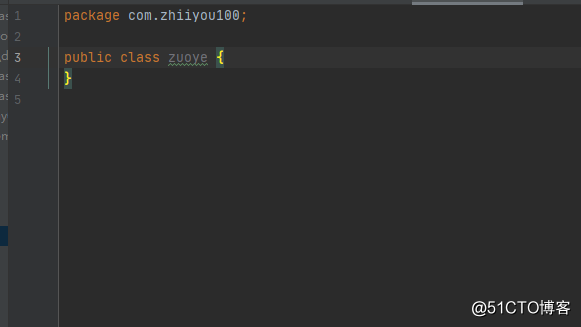通俗讲解python 装饰器
装饰器其实一直是我的一个'老大难'。这个知识点就放在那,但是拖延症。。。
其实在平常写写脚本的过程中,这个知识点你可能用到不多
但在面试的时候,这可是一个高频问题。
一、什么是装饰器
所谓的装饰器,其实就是通过装饰器函数,来修改原函数的一些功能,使得原函数不需要修改。
这一句话理解起来可能没那么轻松,那先来看一个'傻瓜'函数。
放心,绝对不是'Hello World'!
def hello(): print('你好,装饰器')
肿么样,木骗你吧? 哈哈,这个函数不用运行相信大家都知道输出结果:'你好,装饰器'。
那如果我想让hello()函数再实现个其他功能,比如多打印一句话。
那么,可以这样'增强'一下:
def my_decorator(func): def wrapper(): print('这是装饰后具有的新输出') func() return wrapperdef hello(): print('你好,装饰器')hello = my_decorator(hello)hello()
运行结果:
这是装饰后具有的新输出你好,装饰器[Finished in 0.1s]
很显然,这个'增强'没啥作用,但是可以帮助理解装饰器。
当运行最后的hello()函数时,调用过程是这样的:
hello = my_decorator(hello)中,变量hello指向的是my_decorator() my_decorator(func)中传参是hello,返回的wrapper,因此又会调用到原函数hello() 于是乎,先打印出了wrapper()函数里的,然后才打印出hello()函数里的那上述代码里的my_decorator()就是一个装饰器。它改变了hello()的行为,但是并没有去真正的改变hello()函数的内部实现。
但是,python一直以'优雅'被人追捧,而上述的代码显然不够优雅。
二、优雅的装饰器
所以,想让上述装饰器变得优雅,可以这样写:
def my_decorator(func): def wrapper(): print('这是装饰后具有的新输出') func() return wrapper@my_decoratordef hello(): print('你好,装饰器')hello()
这里的@my_decorator就相当于旧代码的hello = my_decorator(hello),@符号称为语法糖。
那如果还有其他函数也需要加上类似的装饰,直接在函数的上方加上@my_decorator就可以,大大提高函数的重复利用与可读性。
def my_decorator(func): def wrapper(): print('这是装饰后具有的新输出') func() return wrapper@my_decoratordef hello(): print('你好,装饰器')@my_decoratordef hello2(): print('你好,装饰器2')hello2()
输出:
这是装饰后具有的新输出你好,装饰器2[Finished in 0.1s]
三、带参数的装饰器
1. 单个参数
上面的只是一个非常简单的装饰器,但是实际场景中,很多函数都是要带有参数的,比如hello(people_name)。
其实也很简单,要什么我们就给什么呗,直接在对应装饰器的wrapper()上,加上对应的参数:
def my_decorator(func): def wrapper(people_name): print('这是装饰后具有的新输出') func(people_name) return wrapper@my_decoratordef hello(people_name): print('你好,{}'.format(people_name))hello('张三')
输出:
这是装饰后具有的新输出你好,张三[Finished in 0.1s]
2. 多个参数
但是还没完,这样虽然简单,但是随之而来另一个问题:因为并不是所有函数参数都是一样的,当其他要使用装饰器的函数参数不止这个一个肿么办?比如:
@my_decoratordef hello3(speaker, listener): print('{}对{}说你好!'.format(speaker, listener))
没关系,在python里,*args和**kwargs表示接受任意数量和类型的参数,所以我们可以这样写装饰器里的wrapper()函数:
def my_decorator(func): def wrapper(*args, **kwargs): print('这是装饰后具有的新输出') func(*args, **kwargs) return wrapper@my_decoratordef hello(people_name): print('你好,{}'.format(people_name))@my_decoratordef hello3(speaker, listener): print('{}对{}说你好!'.format(speaker, listener))hello('老王')print('------------------------')hello3('张三', '李四')
同时运行下hello('老王'),和hello3('张三', '李四'),看结果:
这是装饰后具有的新输出你好,老王------------------------这是装饰后具有的新输出张三对李四说你好![Finished in 0.1s]
3. 自定义参数
上面2种,装饰器都是接收外来的参数,其实装饰器还可以接收自己的参数。比如,我加个参数来控制下装饰器中打印信息的次数:
def count(num): def my_decorator(func): def wrapper(*args, **kwargs): for i in range(num):print('这是装饰后具有的新输出')func(*args, **kwargs) return wrapper return my_decorator@count(3)def hello(people_name): print('你好,{}'.format(people_name))hello('老王')
注意,这里count装饰函数中的2个return.运行下,应该会出现3次:
这是装饰后具有的新输出你好,老王这是装饰后具有的新输出你好,老王这是装饰后具有的新输出你好,老王[Finished in 0.1s]
4. 内置装饰器@functools.wrap
现在多做一步探索,我们来打印下下面例子中的hello()函数的元信息:
def my_decorator(func): def wrapper(*args, **kwargs): print('这是装饰后具有的新输出') func(*args, **kwargs) return wrapper@my_decoratordef hello(people_name): print('你好,{}'.format(people_name))print(hello.__name__) #看下hello函数的元信息
输出:
wrapper
这说明了,它不再是以前的那个 hello() 函数,而是被 wrapper() 函数取代了。
如果我们需要用到元函数信息,那怎么保留它呢?这时候可以用内置装饰器@functools.wrap。
import functoolsdef my_decorator(func): @functools.wraps(func) def wrapper(*args, **kwargs): print('这是装饰后具有的新输出') func(*args, **kwargs) return wrapper@my_decoratordef hello(people_name): print('你好,{}'.format(people_name))print(hello.__name__)
运行下:
hello[Finished in 0.1s]
四、类装饰器
装饰器除了是函数之外,也可以是类。
但是类作为装饰器的话,需要依赖一个函数__call__(),当调用这个类的实例时,函数__call__()就会被执行。
来改造下之前的例子,把函数装饰器改成类装饰器:
class MyDecorator(): def __init__(self, func): self.func = func def __call__(self, *args, **kwargs): print('这是装饰后具有的新输出') return self.func(*args, **kwargs)# def my_decorator(func):# def wrapper():# print('这是装饰后具有的新输出')# func()# return wrapper@MyDecoratordef hello(): print('你好,装饰器')hello()
运行:
这是装饰后具有的新输出你好,装饰器[Finished in 0.1s]
跟函数装饰器一样,实现一样的功能。
五、装饰器的嵌套
既然装饰器可以增强函数的功能,那如果有多个装饰器,我都想要怎么办?其实,只要把需要用的装饰器都加上去就好了:
@decorator1@decorator2@decorator3def hello(): ...
但是要注意这里的执行顺序,会从上到下去执行,可以来看下:
def my_decorator(func): def wrapper(): print('这是装饰后具有的新输出') func() return wrapperdef my_decorator2(func): def wrapper(): print('这是装饰后具有的新输出2') func() return wrapperdef my_decorator3(func): def wrapper(): print('这是装饰后具有的新输出3') func() return wrapper@my_decorator@my_decorator2@my_decorator3def hello(): print('你好,装饰器')hello()
运行
这是装饰后具有的新输出这是装饰后具有的新输出2这是装饰后具有的新输出3你好,装饰器[Finished in 0.1s]
好记性不如烂笔头,写一下理解一下会好很多。
以上就是通俗讲解python 装饰器的详细内容,更多关于python 装饰器的资料请关注好吧啦网其它相关文章!
相关文章:

 网公网安备
网公网安备